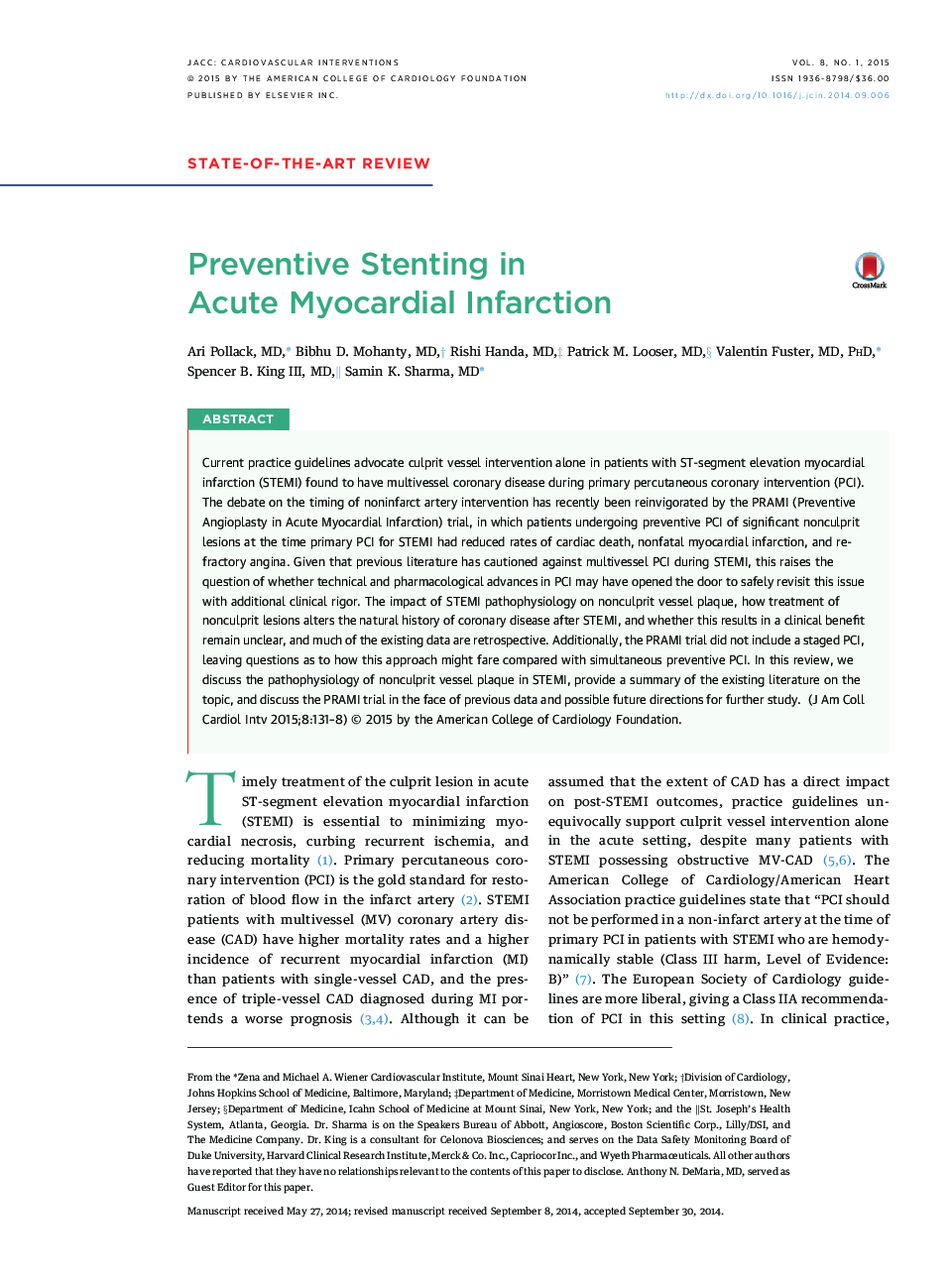| Article ID | Journal | Published Year | Pages | File Type |
|---|---|---|---|---|
| 5981302 | JACC: Cardiovascular Interventions | 2015 | 8 Pages |
Current practice guidelines advocate culprit vessel intervention alone in patients with ST-segment elevation myocardial infarction (STEMI) found to have multivessel coronary disease during primary percutaneous coronary intervention (PCI). The debate on the timing of noninfarct artery intervention has recently been reinvigorated by the PRAMI (Preventive Angioplasty in Acute Myocardial Infarction) trial, in which patients undergoing preventive PCI of significant nonculprit lesions at the time primary PCI for STEMI had reduced rates of cardiac death, nonfatal myocardial infarction, and refractory angina. Given that previous literature has cautioned against multivessel PCI during STEMI, this raises the question of whether technical and pharmacological advances in PCI may have opened the door to safely revisit this issue with additional clinical rigor. The impact of STEMI pathophysiology on nonculprit vessel plaque, how treatment of nonculprit lesions alters the natural history of coronary disease after STEMI, and whether this results in a clinical benefit remain unclear, and much of the existing data are retrospective. Additionally, the PRAMI trial did not include a staged PCI, leaving questions as to how this approach might fare compared with simultaneous preventive PCI. In this review, we discuss the pathophysiology of nonculprit vessel plaque in STEMI, provide a summary of the existing literature on the topic, and discuss the PRAMI trial in the face of previous data and possible future directions for further study.
